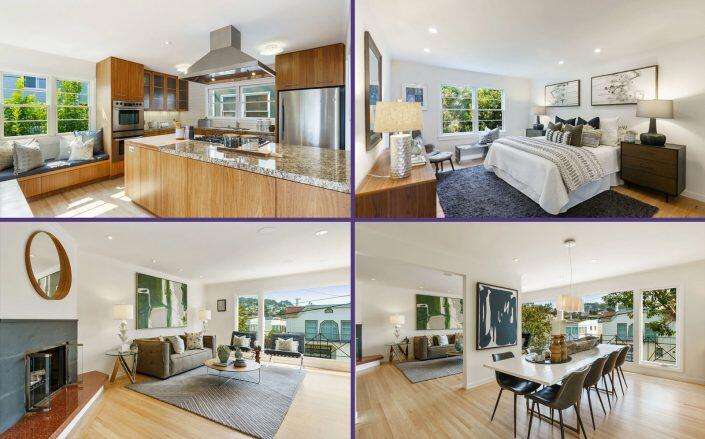Another day, another record-breaking sale in San Francisco. This time the coveted property was a mid-century modern with a six-car garage on a large lot at 121 Theresa Street in Mission Terrace. The 1,664-square-foot three-bedroom home listed for $1,525,000 and was in contract in five days for almost 50 percent over the asking price.
The $2,250,000 sale was higher than any previous close in the neighborhood by over $100,000. The sellers, who were only the second owners of the 1956 home, received seven offers — three all cash — according to listing agent David Ayerdi of Sotheby’s International Realty. But the all-cash offers came in under the winning bid, and the sellers ended up going with the highest price and “cleanest terms,” he said.
Even at that price, Mission Terrace is a relative bargain compared with some other San Francisco neighborhoods, and is increasingly popular with young families priced out of nearby southern San Francisco neighborhoods.
“The prices are still affordable in comparison to Bernal Heights, Glen Park and now Sunnyside,” Ayerdi explained. “The southern part of San Francisco has become very popular among the young buyer pool.”

121 Theresa Street in Mission Terrace (Open Homes Photography for Sotheby’s International Realty)
The median sales price for a house in Mission Terrace in the first half of the year was $1,365,000, with an average price per square foot just under $900, according to a Compass report. In neighboring Glen Park, the median sales price was almost $1 million more at $2,254,000, and over $1,200 per square foot during the same time period.
Sales prices citywide have jumped substantially, to a median of $1,875,000 in August, from a median $1,650,000 a year earlier. One important factor pushing prices higher: many of those leaving the city even before the pandemic were not as wealthy as the new arrivals who replaced them, a trend that has only become more dramatic over the past year.
“Out-migration accelerated in San Francisco since Covid hit, especially of less affluent residents—unemployment hit lower wage jobs the hardest—though departures by affluent households seeking less densely populated locations also occurred,” according to the Compass report. “However, SF saw heightened demand for houses (with their yards and decks) by affluent and very affluent buyers competing for an inadequate supply of listings for sale.”
The increased wealth and buyer demand for a limited number of single-family homes, combined with a common local practice of underpricing properties to bring in scores of offers, has made SF the leading market in the nation for over-asking sales.
Condo sales, on the other hand, dipped considerably during the pandemic. Even with a more recent upswing they are now running even with their $1,250,000 median sales price from one year ago.
They also aren’t selling nearly as quickly as single-family homes, giving beleaguered buyers a chance to catch their breath before making an offer. In spring of 2021, 83 percent of all San Francisco single-family homes sold within 30 days of coming to market, and of those quick sales the sales price was an average of 12 percent over list price, according to Compass data. Only 61 percent of SF condos sold within 30 days, a number that dropped to just over 50 percent in Mission Bay and South Beach as pandemic-minded buyers sought out more private space and fewer shared amenities than the newer developments in these neighborhoods typically provide.
